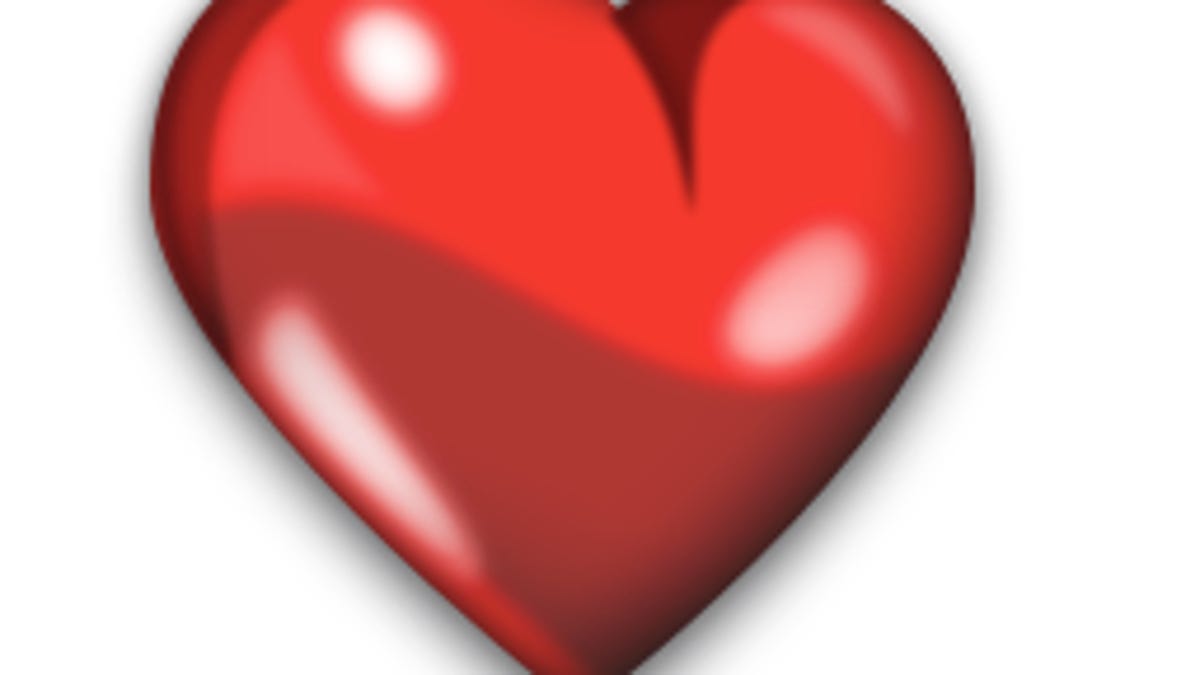Where to find hearts in OS X
If you would like to send a Valentine's message, OS X offers some nice images you can add to it.

With it being Valentine's Day, you might wish to send your significant other an amorous message or two, and while a card, flowers, or a box of chocolates may be the traditional ways to do so, sending a quick e-mail or chat message is not out of the question, either. Of course, you may wish to enhance said message with a heart or two. Sure, the first way that comes to mind would probably be to search the Web for an image you would like, but there are actually a couple of nice heart images buried in OS X that may be just what you are looking for.
The first set of hearts is located in the OS X character viewer, which in most programs can be invoked by pressing Option-Command-T. In here, you can locate a heart symbol by searching for the word "heart"; you should then be given a number of emoticons and other characters that can be used in-line with your text.
While the characters are intended to be used in your text, you can use them for other purposes as well by extracting them and using them as an image. To do this, open an empty TextEdit document (or that of another text editor). Then open the character viewer and insert your character of choice. Once this is completed, follow these steps:
- Select the character and increase its font size to a relatively large point, such as 288
- Click away from the character to deselect it, and then use spaces and new lines to position the character in the middle of the document so it has ample white space around it.
- Press Shift-Control-Command-4 to bring up the selection screenshot mode
- Click and drag the selection box around the desired character
- Open the Preview application and press Command-V to "paste" the previous screenshot as a new image
- Click the Edit toolbar button and select the "Instant Alpha" tool.
- Click and drag the tool in the white area around the image so only the white area is pink.
- Release the tool and press delete to remove that area from the image.
At this point you have an isolated image of the character that you can then crop down and insert into a message or two.
In addition to using emoticons, OS X does have a couple of other hearts in the system, which can be found by going to the /System/Library/CoreServices/ folder, right-clicking the "CoreTypes.bundle" item and selecting "Show Package Contents" and then opening the /Contents/Resources folder. To get here quicker, triple-click or otherwise select the following file path in its entirety and then right-click the selection and choose "Open" from the Services contextual submenu:
/System/Library/CoreServices/CoreTypes.bundle/Contents/Resources
In this folder, locate the two images called "FavoriteItemsIcon.icns" and "ToolbarFavoritesIcon.icns," which are two different styles of hearts. You can open them in the Preview application and copy them into a document or message of choice (note that ICNS files are bundles of several different sizes of an icon image, which you will see listed to the left in the Preview window).
Questions? Comments? Have a fix? Post them below or
e-mail us!
Be sure to check us out on Twitter and the CNET Mac forums.

